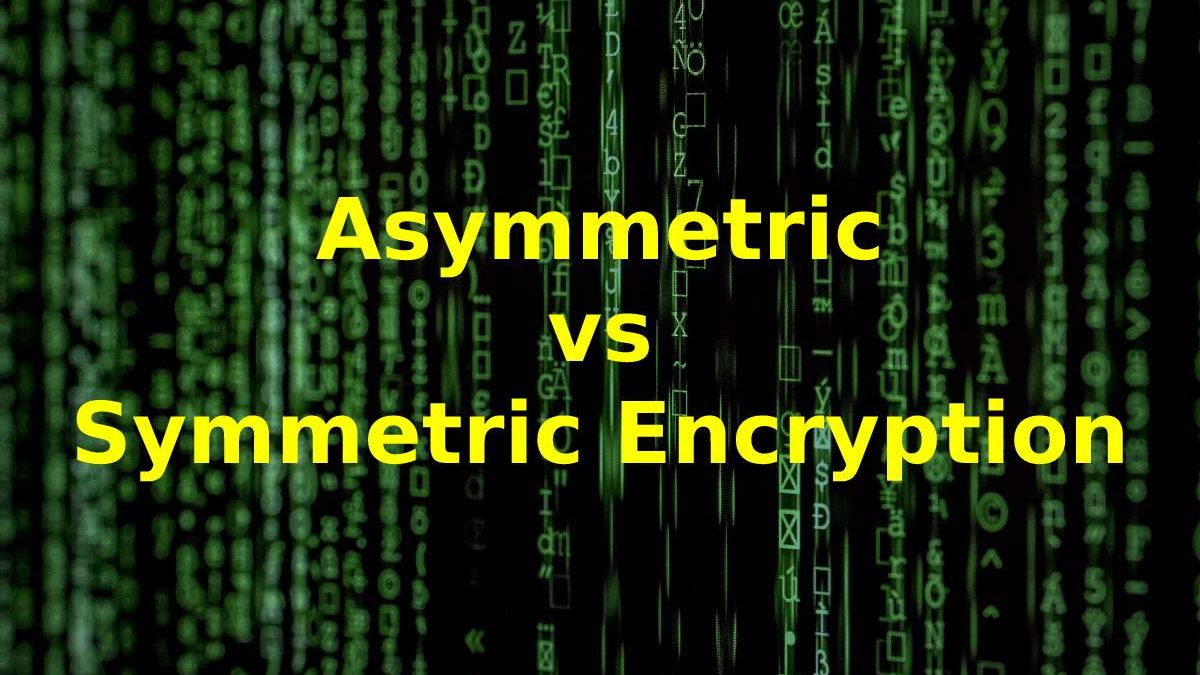Table of Contents
When to Use Asymmetric vs Symmetric Encryption
Unsure which type of encryption to use?
You’re not alone.
This guide is going to discuss when to use asymmetric vs symmetric encryption.
What is encryption and what are the different types of encryption?
Asymmetric vs Symmetric Encryption – The answer depends on what you’re using it for, but to start with, it’s helpful to just understand what encryption actually does. Encryption scrambles your data so that only people who have the key can get
Encryption is the process of encoding data so that only authorized users can access it. There are several different types of encryption, but two of the most common are asymmetric and symmetric.
How do symmetric vs asymmetric encryption differ?
Asymmetric encryption uses two different keys to encrypt and decrypt data. One key is used for encryption, the other for decryption. This means that sending encrypted data to someone securely requires them to have both of the keys required. Since only one key shared, it’s easier to keep this type of encryption secure. However, if either key is compromised, then the whole system would fail.
Symmetric encryption only uses one key to both encrypt and decrypt data. This means that if you send encrypted data using this type of encryption, the recipient would need to know the key in order to unlock it. Since only one key is used for encryption and decryption, symmetric encryption is easier to apply quickly but keeping it secure is more difficult as there’s a higher chance of a key being compromised.
When to use each type of encryption?
Most commonly, asymmetric encryption is used for authentication and encrypting small amounts of data that can be decrypted by multiple parties as it’s easier to manage than symmetric encryption.
Asymmetric cryptography provides confidentiality, integrity, authentication, and non-repudiation.
Symmetric cryptography provides confidentiality only but is much faster for encrypting large amounts of data. This type of encryption often used to encrypt things like passwords or small files that are being share with only one person.
When you have a very high-security requirement, it’s better to go with asymmetric encryption since this type of encryption is more secure. Since it’s easier to keep asymmetric keys secret, this type of encryption also provides non-repudiation security which means that the sender can’t claim they didn’t send a message after the fact.
Asymmetric cryptography provides confidentiality, integrity, authentication, and non-repudiation while symmetric cryptography only provides confidentiality.
Importance of using strong passwords to protect your data
You should use a unique, randomly generated password for every online account that you have. Make sure it’s 12 characters or more and contains a combination of uppercase letters, lowercase letters, digits, and symbols. Avoid using words from the dictionary or personal information like your name, birth date, or pet’s name.
Tips for creating a strong password
Use three random words together to form the core of your password. For example “Weepy&Sensitive&Dolphin” You can use a specific number to replace any word in this phrase as long as it makes grammatical sense. For example, “Weepy$&Sensitive&Dolphin” becomes the password “Weepysensitivedolphin”. To improve security further, you can replace any word in this phrase with a foreign language word that you don’t understand. For example, using French words would result in the password “Jolie&Attendent&Girafe”.
When should you avoid symmetric encryption?
You shouldn’t use symmetric encryption if it’s not necessary to do so. For example, sending a password securely over the internet better suited for asymmetric encryption since you don’t usually need multiple people to have access to the same data.
If possible, it’s better to avoid symmetric encryption and instead store your password in an encrypted file that can be access from any device with internet access if needed. Re-keying and decryption take a lot of time and energy so it’s better to use asymmetric encryption for this purpose as you only need one key to encrypt and decrypt the data.
Conclusion
No matter what type of encryption you use, it’s important that you don’t forget your password. In addition to this, you should always avoid storing your password in a file on any device. That could potentially be access from the internet without using some sort of encryption.
If possible, it’s recommend to use asymmetric encryption for protecting passwords. And use symmetric encryption only when there’s a need to do so.

